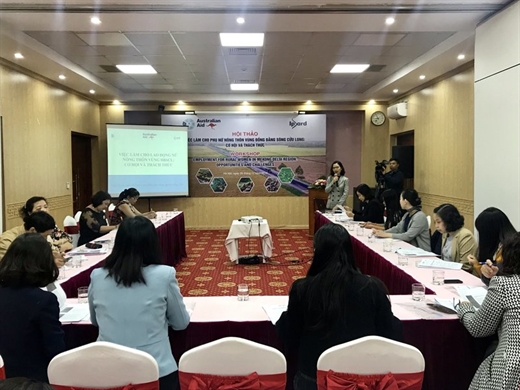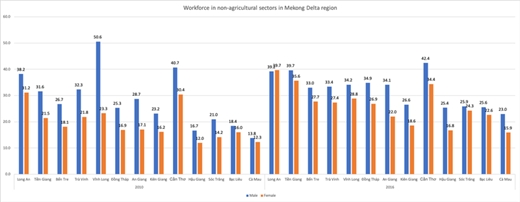Australia supports Economic Reform in Vietnam (Aus4Reform)
- en
- News and Media
- Aus4Reform News
- Vietnamese rural women face job displacement from Industry 4.0
27/12/2019
Vietnamese rural women face job displacement from Industry 4.0
The advancement of technologies means companies are looking for fewer labor force but with higher quality, which is a major challenge for female workers, said an expert.
Vietnamese rural women face job displacement from Industry 4.0
The advancement of technologies means companies are looking for fewer labor force but with higher quality, which is a major challenge for female workers, said an expert.
For many, the Industry 4.0 would bring numerous opportunities, however, for Vietnamese rural women, particularly in the Mekong Delta region, it comes with serious risk of job displacement, among other challenges, according to Tran Thi Thanh Nhan, expert from the Institute for Policy and Strategy for Agriculture and Rural Development (IPSARD).
|
|
|
| Overview of the workshop. |
A study from the International Labor Organization (ILO) suggested 86% of textile and footwear industries workers in Vietnam are at risk of losing their jobs due to technology.
“The risk is even higher in jobs requiring only basic skills, which appears to be a particular concern for rural women, as most of them are working in low-skilled and unstable jobs,” said Nhan at a workshop under the program “Australia supports Vietnam’s economic reform” (Aus4Reform) on December 26, discussing challenges and opportunities for Vietnamese rural women in the Mekong Delta region.
Statistics revealed in textile and footwear industries, female workers account for 70% of the total labor force, while for family jobs or jobs without salary, the rate of female labor force is 62.4%.
The advancement of technologies means companies are looking for fewer labors but with higher quality, which is a major challenge for female workers, added Nhan.
Sharing the same view point with Nhan, Nguyen Thi Kieu Trang, vice chairwoman of the Women’s Union in Ben Tre province, said the fast growing trend of online shopping and super markets are causing difficulties for traditional markets, where the female labor force makes up the majority.
|
|
|
| Unit: %. Source: IPSARD. |
IPSARD’s expert Nhan expressed concern for female workers in the Mekong Delta region, who accounted for 65.7% of total labor force in the region in 2016 statistics, with the majority working in agricultural sectors, footwear and textile industries.
The average monthly income of women in the Mekong Delta region is also lower than that of men, standing at only VND1.43 million (US$61.77), and the gap is widening, stated Nhan, adding the rate of women having opportunities to train for more sophisticated jobs is the lowest nationwide, at only 28%, compared to the national average of 42.5%.
“Overall, female workers are below male workers in terms of qualification, job skills and capability to access production resources,” Nhan added.
Nhan expected the government to continue providing supporting policies for female workers, while encouraging companies to employ female workers, as well as giving priority for women to access credit.
In 2019, Vietnam fell 10 places to 87th in the global ranking in eliminating gender inequality, according to 2019 Global Gender Gap Report released by the World Economic Forum, for which Nhan said the issue of gender equality should be integrated in national development objectives.
Source: Hanoitimes.vn





